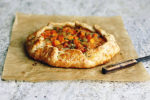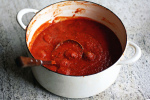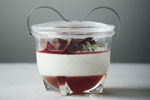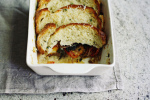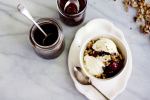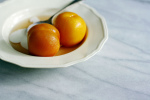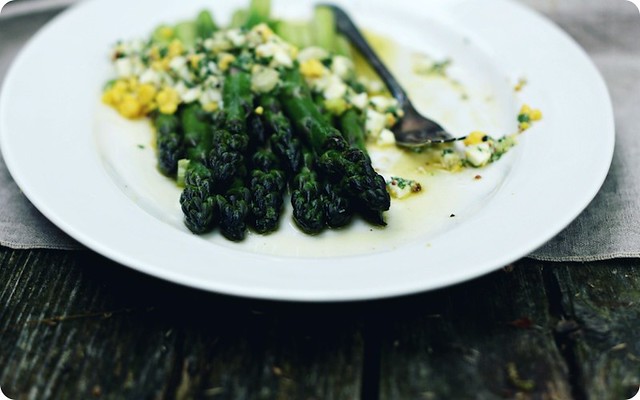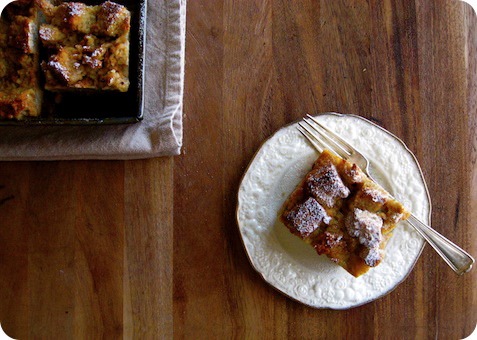This asparagus season
 Monday, May 23, 2011 at 12:27PM
Monday, May 23, 2011 at 12:27PM If I had shown you the collected plates of our last week or so, it would have made for the most boring slideshow in the history of the world. It's been pretty much one word, four syllables, at almost every meal.
Asparagus. Daily. There's been no complaints.
There it's been, with oozy-yolked dipper eggs to start the day, shaved into emerald-edged ribbons as a lunch salad, stir-fried with ginger, sesame and soy for dinner. When baking a cake left me with egg yolks left over, I took it as a sign and lickety-split made a herb-specked, lemon-heavy Hollandaise to drag our stalks through.
I was tempted to tell you the way I've liked it best, but it's not much of a recipe. Just a knob of butter melted in a heavy skillet and allowed to begin to brown, then stopped from going overboard by a scant pour of olive oil. In goes trimmed asparagus and another scant pour - water this time - quickly simmering/steaming the stalks to tender-crisp and setting their colour at its brightest. Once the water's bubbled away, the asparagus goes off the heat and onto a plate. There's salt and pepper to finish, along with a squeeze of lemon, an extra drop of oil and broad, lacy shavings of Parmesan. No trick to that.
And so instead, I thought I'd tell you about a dish that has a bit more going on but shares the same quick time from counter to table. It may not be my full-stop favourite, but it's up there and gaining a following.
It starts with a winner of a sauce - David Lebovitz's sauce gribiche. Like he says, it's one of those keep-it-in-your-back-pocket recipes that makes something kind of spectacular out of a few everyday ingredients. It's French in lineage, a loose sauce-meets-vinaigrette, with an emulsification of (cooked!) egg yolk and mustard to start, a good measure of olive oil, chopped egg, capers, cornichons and herbs.
That was where I was heading. Then, thumbing through Canal House Cooking Volume No. 3 - the winter and spring edition from last year - I was reminded of their take on the iceberg wedge; sharp, crunchy radicchio garnished with hard-boiled eggs, scallion and crisp pancetta. It's gorgeous. Their vinaigrette and garnish shares a lot of qualities with sauce gribiche, and that's when I decided to change course and take the best from both.
This vinaigrette ends up eggier than his sauce gribiche, and the cornichons are swapped out for the fresh pungency of scallion - that's the Canal House influence at work. My only original contribution was to fleck the dressing with dried red pepper flakes, which spark here and there.
We ate it at lunch yesterday with nothing else necessary than a slice of toasted granary bread as raft for the spears. The crumb opened up to the spiky, supple dressing, and the crust afforded the dish substantial chew. Use the last of your bread for sopping up all the extra bits and dregs of dressing - be greedy with the bread, I say.
One note on the asparagus itself; you can prepare it however you prefer, but can we talk about matters of size? Go straight for the thicker stalks, the kind that almost require a fork and knife when eating with anyone aside from the closest of company. Dainty, they are not, those sturdy ones.
The fat, juicy stalks really have the most flavour, and it's their fleshy sweetness that stands up to the piquancy of this dressing best. If those spindly stems we often see are thought of as pencil-thin, the sort you'll want here are more the magic-marker variety.
As with a traditional sauce gribiche, this vinaigrette would be happy to pal around with some boiled new potatoes or a nice bit of fish. Or, to tweak the Canal House example, I'd like it this over grilled wedges of radicchio at the next barbeque. I've got ideas of blanched green beans when they're around.
That said, I've not tried any of those suggestions. We've only gone so far as asparagus and stopped quite stubbornly there. For right now, in this asparagus season that is so quickly passing, that's far enough for me.
Asparagus with Hard-boiled Egg Vinaigrette
Adapted from from Canal House Cooking and David Lebovitz, with thanks.
Ingredients
Kosher salt
2 scallions, white and light green parts separated and finely sliced
1 teaspoon red wine vinegar
2 hard boiled eggs, peeled
1 teaspoon Dijon mustard
1/3-1/2 cup extra-virgin olive oil
10 capers, rinsed and dried
Approximately 1/8 teaspoon dried chili flakes
1 handful of fresh, flat leaf parsley leaves, chopped
1 pound thick asparagus, peeled if needed, trimmed and cooked to your liking
In a small bowl, pinch together 1/8 teaspoon salt with the white part of the sliced scallions. Once the scallion begins to release some juice, stir in the red wine vinegar and set aside.
Separate the egg yolks from the hard boiled eggs. Place one egg yolk in a medium bowl. Chop the other egg yolk and egg whites separately, and keep both aside for later.
Mix the Dijon mustard into whole egg yolk until smooth. Using the back of a spoon or fork, beat in 1/3 cup of the olive oil in a thin, steady stream. Once emulsified, stir in the vinegar and white scallions.
Add the reserved egg whites to the sauce, along with the capers, the chili flakes and most of the parsley. Taste and season with salt and pepper as needed. It'll be quite kicky. If the sauce seems too thick, loosen with the extra olive oil.
To serve, arrange the cooked asparagus on a plate. Spoon over the sauce, then garnish with the chopped egg yolk, reserved parsley and scallion greens.
Serves 2.
 asparagus,
asparagus,  eggs in
eggs in  light lunch,
light lunch,  side dish
side dish 

